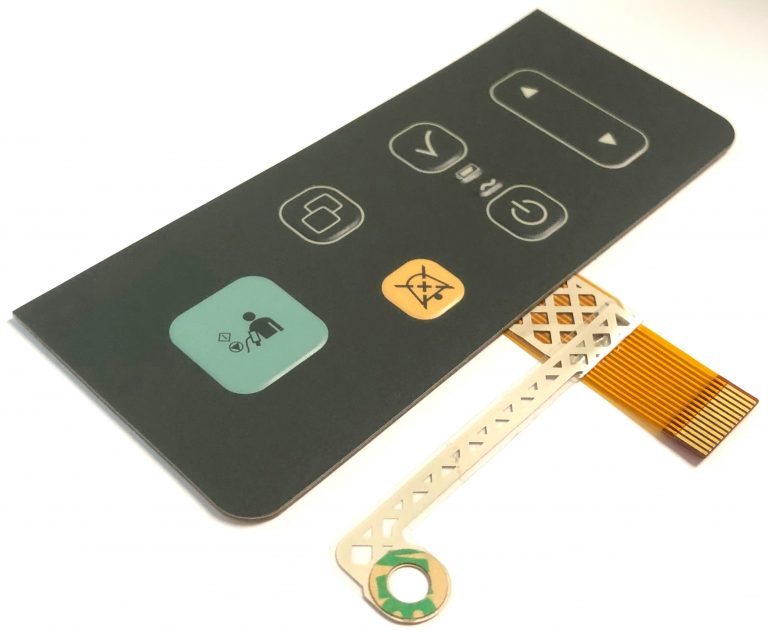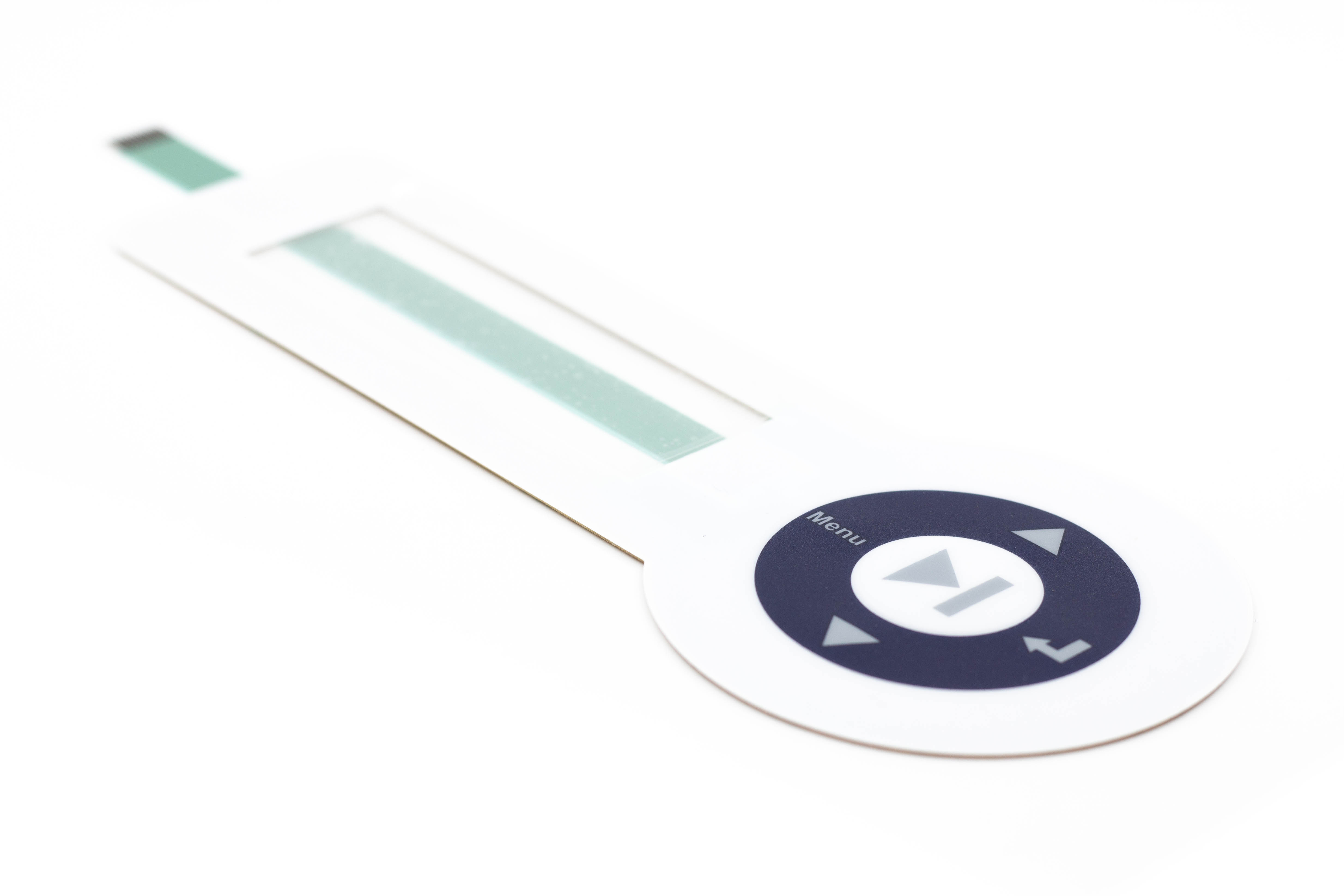All Concerning Membrane Switch Over: A Comprehensive Guide for Beginners
Membrane switches are vital parts in modern-day electronics, offering an unique user interface for user interaction - membrane switch. Their layered building and construction, including overlays and conductive traces, gives performance and sturdiness. Unlike traditional mechanical switches, membrane layer buttons present a smooth design and adjustable options. Comprehending their vital functions and advantages can transform product layout. Nevertheless, the details of their application and design factors to consider require additional expedition
What Is a Membrane Change?
A membrane layer button is a sort of electrical button that includes a flexible membrane layered over a published motherboard. This design permits a smooth and portable interface, commonly made use of in various electronic gadgets. Membrane buttons are generally located in consumer appliances, medical devices, and industrial equipment as a result of their durability and resistance to environmental factors.The building typically consists of several layers, such as graphic overlays and sticky support, which provide tactile comments and secure the wiring beneath. The procedure of a membrane layer button is started when pressure is related to the surface, finishing an electrical circuit.These buttons are valued for their versatility, enabling custom designs and published graphics that accommodate details interface. Their inconspicuous nature lowers room needs, making them excellent for applications where typical buttons might not fit. In general, membrane buttons use a practical and visual option for modern digital devices.
Key Elements of Membrane Layer Switches Over
Membrane changes comprise a number of key components that add to their capability and performance. The top layer, understood as the overlay, provides the user interface and is commonly printed with symbols or graphics. Underneath the overlay exists a spacer layer, which divides the conductive elements and stops inadvertent activation. The following essential element is the graphic layer, which improves looks and assures the durability of the design.Conductive traces, typically made from products like silver or carbon, are printed on the circuit layer. When pressure is used to the overlay, these traces enter get in touch with, finishing the circuit. Furthermore, a backing layer uses architectural assistance and can be made from materials such as polyester or polycarbonate. With each other, these parts produce a trusted, straightforward interface suitable for various applications, from household appliances to commercial equipment. Recognizing these aspects is necessary for any person thinking about membrane button innovation.
How Membrane Layer Switches Work
Recognizing how membrane layer switches feature is necessary for appreciating their extensive usage in various tools. A membrane switch operates via a collection of layers, consisting of a graphic overlay, spacer, and a circuit layer. When stress is put on the overlay, it compresses the spacer layer, enabling the circuit layer to make get in touch with and complete an electrical circuit. This activity sends out a signal to the tool, prompting a response, such as activating a light or turning on a function.Membrane switches can be designed with different features, consisting of responsive feedback, backlighting, and custom graphics, improving individual communication. Their construction enables for a sealed style, securing the interior components from dust, dampness, and impurities. This resilience makes them ideal for varied applications, from consumer electronic devices to commercial equipment. On the whole, the simplicity and performance of membrane switches over contribute to their appeal in modern-day innovation.
Benefits of Membrane Layer Changes Over Mechanical Buttons
While mechanical buttons have long been a staple in lots of tools, membrane layer switches offer distinct advantages that make them progressively appealing. One considerable advantage is their slim account, permitting for even more small styles and greater versatility in item growth. Additionally, membrane switches over function a consistent surface, which enhances visual charm and streamlines cleaning, making them appropriate for atmospheres where health is critical.Another benefit is their resistance to dust and moisture. Unlike mechanical buttons, which can be compromised by ecological elements, membrane switches provide a sealed interface that protects against contaminants - membrane switch. Moreover, membrane buttons normally have a longer life-span because of less moving components, leading to enhanced resilience and reliability.Cost-effectiveness is additionally a notable benefit, as membrane layer buttons can be generated wholesale with reduced production costs. These factors integrate to place membrane switches as a functional choice to conventional mechanical alternatives in various applications
Typical Applications of Membrane Layer Switches
Membrane switches are extensively used in various markets, specifically in consumer electronics and commercial control board. In customer devices, they offer a streamlined, straightforward interface, while in commercial setups, they enhance sturdiness and capability. Recognizing these applications highlights the versatility and practicality of membrane buttons in contemporary innovation.
Customer Electronic Devices Instruments
As customer electronics remain to develop, membrane switches have ended up being a preferred selection for a selection of tools as a result of their versatility and sleek design. These switches are commonly found in mobile phones, tablets, and remotes, where space is restricted and aesthetic appeals matter. Their reduced profile and adjustable styles enable producers to create user-friendly interfaces that enhance the overall user experience. Furthermore, membrane layer switches are commonly made use of in home appliances such as microwaves and coffee machine, supplying intuitive control choices while resisting dampness and dust. The durability and dependability of membrane changes make them ideal for daily consumer items, making certain long life and constant efficiency. Overall, their assimilation in consumer electronic devices mirrors a blend of functionality and modern-day style.
Industrial Control Panels
The applications of membrane switches expand beyond customer electronics, discovering considerable use in commercial control panels. These buttons are preferred for their toughness and resistance to extreme environments, making them excellent for making and procedure control settings. They provide a reputable user interface for operators to manage equipment, screen procedures, and readjust settings. Membrane Website layer switches can be tailored to fit particular functional needs, integrating features like backlighting and responsive feedback, improving user experience. Their low-profile layout enables integration into numerous equipment, while their capability to stand up to spills, dust, and extreme temperature levels guarantees durability. Generally, membrane buttons add to risk-free and reliable operation in industrial applications, demonstrating their flexibility and effectiveness sought after atmospheres.
Factors To Consider for Designing Membrane Layer Changes
When making membrane switches, selecting the best materials is crucial to guarantee toughness and functionality. In addition, recognizing layer arrangement techniques can considerably influence the switch's performance and user experience. These considerations play an essential duty in creating trustworthy and efficient membrane layer switch designs.
Product Choice Value
Product choice plays a crucial role in the design and capability of membrane switches. The chosen products straight impact the switch's resilience, tactile reaction, and general visual. Trick factors to consider consist of the substrate, which should provide architectural honesty while permitting adaptability, and the graphic overlay, which requires to be immune to use and environmental factors. Conductive materials must assure trustworthy electrical performance, while adhesives have to supply solid bonding without endangering the switch's procedure. Furthermore, compatibility with making procedures and end-user atmospheres is vital; products should stand up to varying temperatures, humidity levels, and chemical direct exposure. Inevitably, proper material choice not only enhances the membrane layer switch's efficiency however also adds to its long life and individual complete satisfaction, making it a crucial facet of the style process.

Layer Configuration Methods

Often Asked Concerns
How Lengthy Do Membrane Layer Changes Typically Last?
Membrane buttons typically have a life-span of 1 to 5 million cycles, depending on use and ecological conditions. Aspects such find out this here as design high quality and operating regularity greatly influence their toughness and overall performance durability.

Can Membrane Switches Over Be Custom-made for Certain Styles?
Membrane layer buttons can without a doubt be tailored to fit specific layouts, permitting diverse forms, colors, and functionalities. This convenience makes it possible for producers to tailor these buttons to meet unique visual and functional needs efficiently.
What Materials Are Utilized in Membrane Switch Over Building And Construction?
Membrane switches are normally built utilizing products such as polyester, polycarbonate, and adhesive layers. These products provide adaptability, resistance, and durability to ecological factors, making sure the buttons function efficiently in numerous applications and problems.
Are Membrane Layer Switches Water Resistant or Immune to Wetness?
Membrane buttons can be made to be moisture-resistant, utilizing specialized products and finishes. Nevertheless, their waterproof capacities depend upon construction top quality and certain applications, making it essential to evaluate demands for optimal efficiency in different settings.
Exactly How Are Membrane Changes Repaired if Damaged?
Repairing damaged membrane switches typically entails changing the impacted layer or circuit. Service technicians might likewise apply conductive adhesive or make use of specialized fixing packages, making sure performance is brought back without complete substitute of the whole button assembly. Unlike traditional mechanical buttons, membrane layer buttons present a sleek layout and adjustable choices. A membrane switch is a type of electrical button that is composed of a versatile membrane layered over a printed circuit board. The operation of a membrane layer button is started when stress is used to the surface, finishing an electrical circuit.These buttons are valued for their adaptability, enabling custom styles and printed graphics that provide to particular customer interfaces. While mechanical switches have actually long been a staple in numerous tools, membrane switches over offer unique advantages that make them progressively appealing. Membrane switches generally have a longer life-span due to fewer relocating click this site parts, resulting in improved durability and reliability.Cost-effectiveness is additionally a notable advantage, as membrane layer switches can be created in mass with lower production costs.